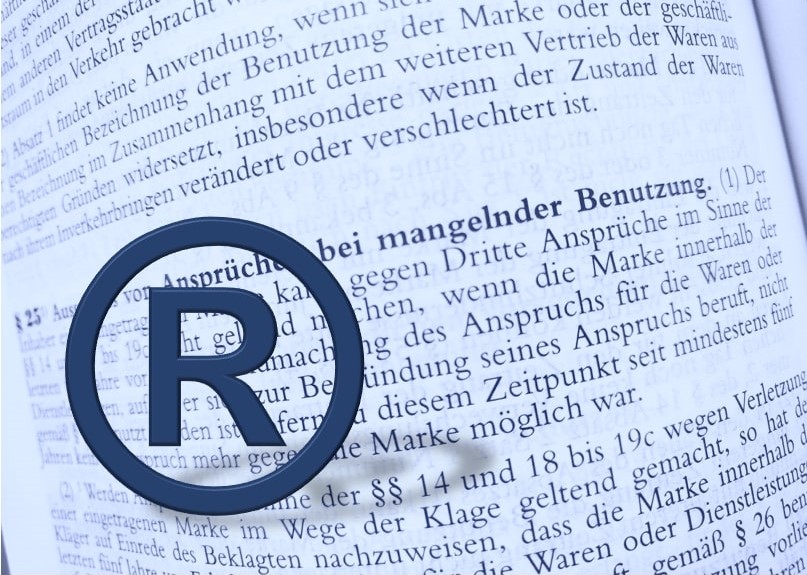The proper use of a registered trademark is essential to maintaining the right to protection against third party violations, and to insure its continued existence. As a general rule, registered trademarks are subject to compulsory use. Use of the trademark must commence within 5 years. Marking a registered trademark with the ® symbol as a registered trademark is not required in Germany.
So how should a trademark be used in a way that preserves its rights?
Trademarks are registered for specific goods and services. The rights and privileges provided by trademark protection apply only to those goods and services. Non-registered goods and services may be identified with the trademark, but do not enjoy trademark protection and do not satisfy the utilization requirement. The basic concept is that a trademark has to be used in the course of commercial business associated with the registered goods and services. A trademark registered for goods should be imprinted on the goods themselves or at least on the packaging of the goods. In the case of services, the customary forms of use must be observed. For example, depending on the industry, the trademark can be used on items [equipment or material] used for the provision of the services.
In most cases, proper use is given. The devil is in the details. Problems begin to arise when a trademark owner starts to engage in small deviations in proper usage. One such common mistake is using a modified form of the mark.
Trademarks must be used in the registered form. This applies in particular to word/figurative marks or figurative marks (logos). Occasionally, these marks are modified over time and used in a new form. It can happen that the modification of the sign progresses to such an extent that it is considered a whole new mark.
This can lead to a determination that the new modified form does not satisfy the proper usage requirement. In such a situation the trademark becomes subject to cancellation and can be attacked by third parties.
Such a situation can also give rise to so-called intermediate rights, i.e., trademarks or corporate identifiers that are younger than the registered trademark but were created at a time when the trademark was no longer being used in a way that preserved rights.
This is problematic if the trademark owner wants to assert his rights against younger trademarks in opposition proceedings. If owner cannot prove proper utilization, the trademark cannot be used in opposition proceedings. The same also applies to infringement proceedings.
In order to close this loophole, at least in the transition between registered and modified form, the modification should be registered as a new trademark in order to avoid intermediate rights of third parties and to guarantee subsequent right-preserving use.
Trademarks are subject to compulsory use for the registered goods and services in the registered form. Modifications of the trademarks can lead to a lack of right-preserving use, whereby the registered trademarks are ripe for cancellation and there is a risk of the creation of intermediate rights of third parties. Therefore, in the case of a modification of signs from the registered form, it should always be checked whether a new application for registration of the trademark is necessary.
Regarding matter specific questions we would be happy to advise you.
